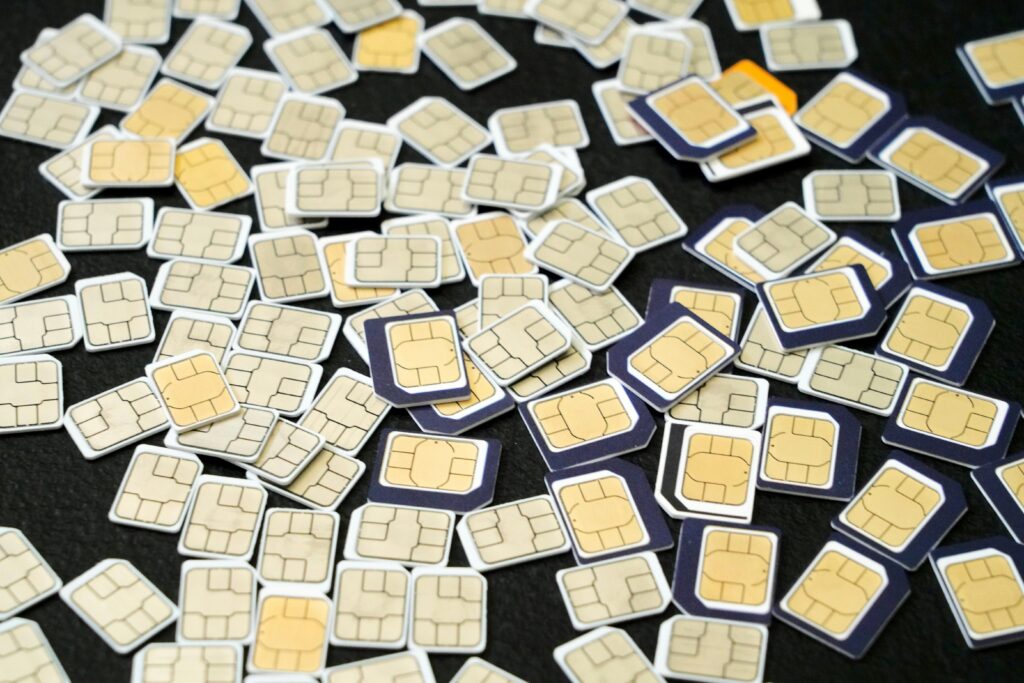Traveling internationally often means juggling multiple SIM cards—one for your home country and another for local calls and data. Carrying two phones is cumbersome, and relying on expensive roaming plans can drain your budget. A high-quality dual-SIM smartphone solves these problems by allowing you to manage two numbers on a single device.

This comprehensive guide explores the best dual-SIM phones for travelers in 2024, covering performance, battery life, network compatibility, durability, and essential travel-friendly features. Whether you’re a frequent business traveler, a digital nomad, or a vacationer who needs reliable connectivity, this guide will help you choose the perfect device.
Why Every Traveler Should Use a Dual-SIM Phone
1. Avoid Expensive Roaming Charges
Most mobile carriers charge exorbitant fees for international roaming. With a dual-SIM phone, you can:
- Insert a local SIM for affordable calls and data.
- Keep your primary SIM active for important calls and 2FA (two-factor authentication).
- Switch between networks to get the best signal in different regions.
2. Convenience of a Single Device
Carrying two phones is impractical when traveling. A dual-SIM phone:
- Reduces clutter in your bag or pockets.
- Simplifies navigation (no need to swap SIMs constantly).
- Ensures seamless communication without missing calls.
3. Better Coverage in Remote Areas
Some countries have patchy network coverage. With dual-SIM capability, you can:
- Use one SIM for calls and another for data.
- Switch to a stronger network if one provider has weak signals.
4. Separate Work and Personal Lines
Business travelers benefit from:
- Keeping work and personal numbers active on one phone.
- Avoiding the need for a second work phone.
5. Emergency Backup Connectivity
If one SIM loses service, the other remains active—critical for safety in unfamiliar locations.
Key Features to Look for in a Dual-SIM Travel Phone
Not all dual-SIM phones are equally suited for travel. Here’s what to consider:
1. Network Compatibility (Bands & 5G Support)
- Check supported LTE/5G bands for your destination.
- Some phones (e.g., U.S. models) lack global bands, causing connectivity issues abroad.
- eSIM support is a plus for instant carrier switching.
2. Battery Life & Charging Speed
- Minimum 4,500mAh battery for all-day use.
- Fast charging (30W or higher) to quickly power up before flights.
- Wireless charging for convenience in hotels and airports.
3. Durability (Water & Dust Resistance)
- IP68 rating protects against rain, spills, and dust.
- Gorilla Glass Victus reduces screen damage from drops.
4. Storage & Expandability
- 128GB+ storage for photos, maps, and apps.
- MicroSD slot (if available) for extra storage.
5. Software & Travel-Friendly Features
- Offline maps (Google Maps, HERE WeGo) for navigation without data.
- Language translation (Google Translate, Samsung Bixby).
- VPN support for secure browsing on public Wi-Fi.
Best Dual-SIM Phones for Travelers in 2025 – Detailed Breakdown
1. Samsung Galaxy S24 Ultra – Best Overall for Travelers
Key Specs:
- Dual-SIM: Hybrid (nano-SIM + eSIM or dual nano-SIM)
- Network Bands: Supports 5G in North America, Europe, Asia
- Battery: 5,000mAh, 45W fast charging
- Durability: IP68, Armor Aluminum 2.0 frame
- Extras: S Pen, 200MP camera, satellite SOS
Why It’s Perfect for Travelers:
✅ Best global 5G coverage – Works in most countries.
✅ Long battery life – Lasts a full day of heavy use.
✅ eSIM support – Easily switch carriers without physical SIM swaps.
✅ Durable build – Survives drops, water, and dust.
✅ S Pen for note-taking – Useful for itineraries and translations.
Drawbacks:
❌ Expensive (starts at $1,299).
❌ Bulky design (may not suit small hands).
2. iPhone 15 Pro Max – Best for iOS Users
Key Specs:
- Dual-SIM: eSIM + nano-SIM (varies by region)
- Network Bands: Extensive 5G/LTE support
- Battery: 4,422mAh (29+ hours video playback)
- Durability: Titanium frame, Ceramic Shield, IP68
- Extras: A17 Pro chip, Action Button, USB-C
Why It’s Great for Travelers:
✅ Seamless eSIM activation – No need to hunt for SIM cards.
✅ Best-in-class video calls (FaceTime, WhatsApp, Zoom).
✅ Strong resale value – Easy to sell after trips.
✅ Lightweight titanium body – Easier to carry.
Drawbacks:
❌ No expandable storage.
❌ Limited customization compared to Android.
3. Google Pixel 8 Pro – Best for AI & Software Features
Key Specs:
- Dual-SIM: nano-SIM + eSIM
- Network Bands: Major 5G networks supported
- Battery: 5,050mAh, 30W charging
- Durability: IP68, Gorilla Glass Victus 2
- Extras: Google VPN, Call Screen, Real-time translation
Why It’s Ideal for Travelers:
✅ Free built-in VPN – Secure browsing on public Wi-Fi.
✅ Google Call Assist – Filters spam calls abroad.
✅ Best Android software – Fast updates, clean interface.
✅ Outstanding camera – Night Sight, Magic Eraser.
Drawbacks:
❌ Slower charging than competitors.
❌ Limited availability in some regions.
4. OnePlus 12 – Best for Fast Charging & Value
Key Specs:
- Dual-SIM: Dual nano-SIM
- Network Bands: 5G in 50+ countries
- Battery: 5,400mAh, 100W fast charging
- Durability: Gorilla Glass Victus 2
- Extras: OxygenOS, Hasselblad cameras
Why It’s a Top Pick:
✅ 100W charging – Full battery in 26 minutes.
✅ Smooth performance – Snapdragon 8 Gen 3.
✅ Affordable flagship – Cheaper than Samsung/Apple.
Drawbacks:
❌ No eSIM in some regions.
❌ No official IP rating (but water-resistant).
5. Xiaomi 14 Ultra – Best for Travel Photography
Key Specs:
- Dual-SIM: Dual nano-SIM
- Network Bands: Wide 5G/LTE support
- Battery: 5,300mAh, 90W wired charging
- Durability: IP68, aluminum frame
- Extras: Leica lenses, 1-inch sensor
Why Photographers Love It:
✅ Pro-grade camera system – 50MP wide, ultrawide, telephoto.
✅ Excellent low-light performance.
✅ Competitive price for flagship specs.
Drawbacks:
❌ MIUI software has bloatware.
❌ Limited U.S. band support.
How to Choose the Right Dual-SIM Phone for Your Travel Needs
1. Frequent International Travelers
- Best Choice: Samsung Galaxy S24 Ultra or iPhone 15 Pro Max (best global support).
- Why? Reliable connectivity, eSIM flexibility, and premium durability.
2. Budget-Conscious Travelers
- Best Choice: OnePlus 12 or Xiaomi 14 Ultra.
- Why? High-end specs at lower prices.
3. Photography-Focused Travelers
- Best Choice: Xiaomi 14 Ultra or Google Pixel 8 Pro.
- Why? Best-in-class cameras with AI enhancements.
4. Business Travelers Needing Security
- Best Choice: iPhone 15 Pro Max or Samsung S24 Ultra.
- Why? Secure eSIM management, enterprise features.
FAQs About Dual-SIM Phones for Travel
Q1: Can I use two SIMs simultaneously for calls and data?
Yes, most dual-SIM phones support DSDS (Dual SIM Dual Standby), allowing both SIMs to stay active.
Q2: Do all dual-SIM phones work worldwide?
No. Check network bands before buying—some U.S. models lack international 5G support.
Q3: Is eSIM better than a physical SIM for travel?
Yes, for convenience—eSIMs can be downloaded instantly, avoiding SIM card hunting.
Q4: Will using two SIMs drain my battery faster?
Slightly, but modern phones optimize power efficiently.
Q5: Can I use a dual-SIM phone in the U.S.?
Yes, but ensure it supports U.S. carriers (T-Mobile, AT&T, Verizon bands).
Final Recommendations & Travel Tips
Best Overall: Samsung Galaxy S24 Ultra
✅ Best global connectivity, battery, and durability.
Best iOS Option: iPhone 15 Pro Max
✅ Seamless eSIM, lightweight, great resale value.
Best Budget Flagship: OnePlus 12
✅ Blazing-fast charging, smooth performance.
Best for Photography: Xiaomi 14 Ultra
✅ Leica-tuned cameras, excellent value.
Pro Travel Tip:
- Download offline maps (Google Maps, Maps.me).
- Enable eSIM before traveling (avoid airport SIM scams).
- Carry a portable charger (20,000mAh for long trips).
Conclusion
Choosing the best dual-SIM phone for travel depends on your budget, destination, and needs. Samsung and Apple lead in global compatibility, while OnePlus and Xiaomi offer premium features at lower prices.
Before your next trip:
✔ Verify network bands for your destination.
✔ Activate eSIM if available.
✔ Invest in a durable case and power bank.
With the right dual-SIM phone, you’ll stay connected effortlessly—no more juggling devices or overpaying for roaming. Safe travels!

